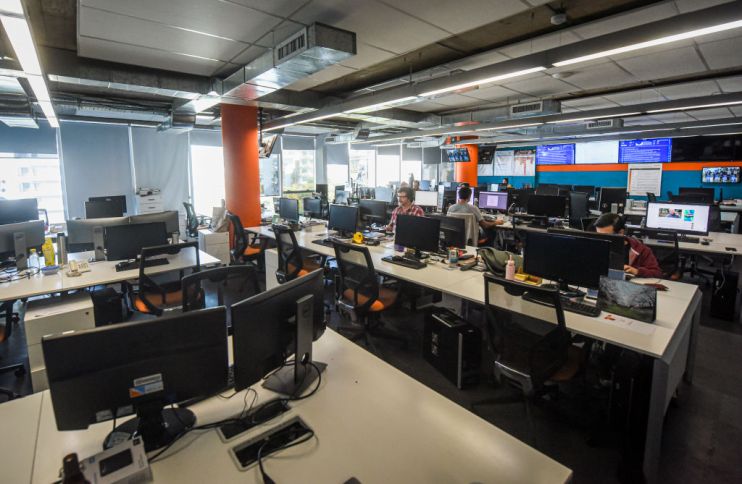Coronavirus: Our digital shift has implications for blockchain

Of the many lessons being learned during the current Covid-19 pandemic, an important one is that many industries are capable of going digital in an emergency. The rapid digital transition has been more agile where blockchain was already in place. Blockchain’s lasting legacy will be its role in the continuation of positive digital change post-crisis.
The sudden and dramatic pace of change can be seen across the world. As of today, countries are accepting “alternative arrangements” for original paper export certificates, New York is allowing notary services by video, and global banks are accepting “original” documents and acceptances by email.
It wasn’t clear to most people how fundamental the flow of paper was, until it stopped.
Read more: Fleet of foot fintech has a role to play in recovery
Industries now face two major challenges: how to go digital immediately, and how to allocate resources properly. Blockchain’s evolution in trade over the past few years can teach us some important lessons.
Rapid response – keeping trade flowing
The key to rapid response is twofold. First is scaling up existing digital solutions. This is aimed at the continuation of existing transactions.
A trickier problem is the second part of the response: implementing digital workarounds where no solutions are in place.
Finance is a big part of the problem. Every business with a line of credit at a bank is drawing it down. But, how do you present (or even create) original documents if you don’t have a printer at home, couriers won’t pick up and bank employees are working remotely in their home offices? Shipment delays mean you may miss your delivery window. But without a Force Majeure declaration, the liability is on you.
The challenge of achieving continuation of existing transactions is attenuated where blockchain-based flows are in place. The root of the problem is the demand for original documents with wet signatures. While in some instances this is the result of legal requirements, more often it is behavioral, or built into the business flow. In other words, it has been considered normal practice for so long that it is ingrained in the culture.
This is the problem that a trade finance app on a purpose-built enterprise blockchain platform can overcome, primarily by building the structures that banks need to inject finance into the deeper tiers of the supply chain. The important consideration for a blockchain solution in this instance is to recognize where local regulations limit the ability to transact.
Efficient allocation of goods
A second problem in the current crisis is the efficient allocation of goods. Much of this is a physical problem. For example, some countries have implemented export restrictions on medical products.
Over the past year, blockchain in supply chain has introduced more efficient ways to connect existing networks together without reverting to paper. What does that mean in terms of the current coronavirus pandemic? There are three implications.
The first is the allocation of resources on a global scale. Ventilators are not in short supply globally, rather, they are not being allocated where they are needed. Normally this is a supply and demand issue. However in a global crisis, multiple networks need to be able to report real-time information about supply and demand. Blockchain’s ability to connect disparate networks instantaneously can overcome this.
The second is inventory management. Blockchain, together with artificial intelligence, allows for demand forecasting and more flexible inventory control. Today, the ship with your cargo may not be able to deliver to your closest port due to staffing shortages. The 2020 pandemic is different because it is global. Exceptions processing on a global scale requires different resources.
A third implication of the pandemic on the adoption of blockchain is that it will overcome the reluctance to implement new solutions. There are already better ways of doing things, but inertia lingers due to the cost of implementation.
Shovel-ready blockchain
If you remember former US President Barack Obama’s 2009 stimulus package, you will remember he focused on what he called “shovel-ready” infrastructure projects. Similarly, the solution to the current crisis will not be a newly-conceptualized digital solution. That’s not how technology achieves success. It needs to be tested, linked into existing systems, deployed, and patched.
In 2020, the world is looking for shovel-ready digital solutions. And the solutions that fit the criteria – electronic issuance and transfer, regulatory approval, trade-ready – are on blockchain.
And most critically, blockchain scales quickly. Perhaps the most critical message for anyone implementing new technology in 2020 is this: the most durable digital solutions are those that are able to scale up and facilitate the infrastructure for subsequent solutions.